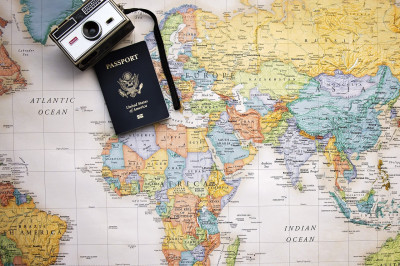Origins and Evolution of Anime
Anime, a term derived from the English word "animation," refers to a distinctive style of animated media that originated in Japan. Its roots can be traced back to the early 20th century, with the earliest known Japanese animation dating to Over the decades, anime has evolved from simple theatrical shorts to complex, serialized television shows and feature films. The post-war period, particularly the 1960s, saw the rise of iconic creators like Osamu Tezuka, who is often referred to as the "God of Manga" and the "father of anime." His work and the work of others laid the foundation for the diverse genres and artistic styles that would come to define anime.
Cultural Significance in Japan
In Japan, anime is not just a form of entertainment but an integral part of the culture. It encompasses a wide range of genres, catering to various age groups and interests. Anime series often reflect societal issues, historical events, and the complexities of human emotions, making them relatable to a broad audience. The industry is also a significant contributor to the Japanese economy, with a substantial market for related merchandise, including toys, clothing, and video games.
Global Expansion and Influence
The late 20th century marked the beginning of anime's global expansion. Series like "Astro Boy," "Dragon Ball," "Sailor Moon," and "Naruto" became household names, creating a burgeoning fanbase outside of Japan. The advent of the internet and the rise of streaming platforms in the 21st century have further accelerated anime's international popularity. Anime conventions, fan communities, and the influence of anime on global pop culture are testaments to its worldwide impact.
Anime Fandom and Community
The anime community is a vibrant and diverse group of enthusiasts who share a passion for this art form. Fans often engage with anime through fan art, fan fiction, cosplay, and anime music videos (AMVs). The community is known for its welcoming nature and the inclusive environment it provides for discussions, debates, and the sharing of recommendations. Anime fandom has also played a crucial role in advocating for official releases and translations, influencing the industry's approach to international markets.
The Artistic Style of Anime
Anime is renowned for its unique artistic style, characterized by colorful artwork, fantastical themes, and vibrant characters. The visual style of anime can vary greatly from the highly detailed and realistic to the simple and exaggerated. Common features include large, expressive eyes and visually dynamic motion. The artistic style is not just about aesthetics but also serves as a vehicle for storytelling, with different animation techniques used to convey emotions and narrative beats.
Genres and Themes
Anime spans a multitude of genres, from action and adventure to romance, horror, and science fiction. It also includes niche genres like mecha (robots), isekai (alternate worlds), and slice of life. Themes can range from the light-hearted and comedic to the dark and philosophical. This diversity allows anime to cater to a wide audience and enables creators to explore complex and often mature themes that might be less common in Western animation.
Economic Impact and Industry Dynamics
The anime industry is a significant cultural export for Japan. It has a complex ecosystem involving production studios, television networks, distributors, and merchandisers. The industry's economic impact extends beyond direct sales of DVDs, Blu-rays, and streaming subscriptions to include a wide array of merchandise, video games, and even tourism, with fans visiting locations depicted in their favorite series. The dynamics of the industry are constantly changing, with new production methods, distribution channels, and international partnerships shaping the future of anime.
Understanding Subs and Dubs: Definitions and DifferencesDefinitionsSubtitles (Subs)
Subtitles, commonly referred to as "subs," are textual translations of the spoken dialogue that appear on-screen during a film or television show. They are typically displayed at the bottom of the screen and allow viewers to read along in their native language while listening to the original audio track. Subtitles are used not only for translating content from one language to another but also for providing written dialogue for the deaf and hard of hearing.
Dubbing (Dubs)
Dubbing, or "dubs," involves replacing the original audio track with a new one in a different language. Voice actors record over the original dialogue, attempting to match the lip movements and expressions of the characters on screen. Dubbing aims to create a viewing experience where audiences can understand the content without reading subtitles, providing a more immersive experience for those who prefer to listen to content in their native language.
DifferencesLanguage Preservation
Subtitles maintain the original language audio, preserving the authentic vocal performances and intonations of the actors. This can be particularly important in anime, where voice acting is considered an art form and the original performances are highly valued by fans. In contrast, dubbed versions replace the original language, which can sometimes lead to a loss of the original emotional impact and cultural nuances.
Cultural Nuances
Subtitles allow for the retention of cultural references and idiomatic expressions that may not have direct equivalents in other languages. This can provide viewers with a more culturally rich experience. Dubbing, on the other hand, often requires adapting or localizing these references to make them more accessible to foreign audiences, which can sometimes alter the original content's cultural context.
Timing and Synchronization
Subtitles can be more flexible with timing, as they only need to ensure that the text is on screen long enough to be read. Dubbing requires careful synchronization of the voice actors' performances with the characters' lip movements and actions, which can be a complex and time-consuming process. This synchronization sometimes necessitates changes to the original script to fit the timing of the scenes.
Accessibility
Subtitles are often favored by those who are deaf or hard of hearing, as well as by viewers who wish to improve their language skills by hearing the original dialogue and reading along in their own language. Dubbing provides an alternative for viewers who may have difficulty reading, such as children or those with visual impairments, or for those who simply prefer to focus on the visual elements of the anime without reading text.
Viewer Engagement
Subtitles require active engagement from the viewer, as they must divide their attention between reading the text and watching the visual action. This can be challenging for some, especially when dealing with fast-paced dialogue or complex scenes. Dubbing allows viewers to fully engage with the visual performance without the need to read, which can be more relaxing and enjoyable for some audiences.
Production Costs and Effort
The production of subtitles is generally less costly and time-consuming than dubbing. Subtitling involves translating the dialogue and ensuring the text is correctly timed with the audio. Dubbing, however, requires casting voice actors, recording sessions, and additional sound engineering to integrate the new vocal tracks with the existing footage, all of which contribute to higher production costs and efforts.
The Historical Context of Subs vs. DubsEarly Beginnings of Anime Distribution
Anime, as a distinctive form of media, began to gain popularity outside of Japan in the 1960s and 1970s. Early exports of anime were often dubbed into the language of the importing country. This was primarily due to the fact that the target audience was children, who were less likely to be able to read subtitles. Shows like "Astro Boy" and "Speed Racer" were among the first to be dubbed and broadcasted to Western audiences.
The Rise of Subtitling
In the 1980s and 1990s, as anime started to attract a more mature audience in the West, there was a shift towards subtitling. This change was driven by the desire of fans to experience anime in a form that was closer to the original Japanese version. Subtitles allowed for a more accurate translation of the dialogue and preserved the original voice acting, which many fans felt was an integral part of a character's identity.
Technological Advancements and Accessibility
The advent of home video technology, such as VHS and later DVD, played a significant role in the subs vs. dubs debate. These formats made it easier for distributors to offer both subtitled and dubbed versions of anime. Fans could now choose their preferred viewing experience. The internet further revolutionized this by enabling fans to access subtitled anime through fansubs, which were often distributed online without official licensing.
Licensing and Localization
As anime's popularity continued to grow, licensing became a more prominent issue. Companies that acquired the rights to distribute anime outside of Japan had to make decisions about whether to invest in dubbing, which could be costly, or to release the anime with subtitles. The choice often depended on the perceived market for the anime; shows aimed at a broader audience, including children, were more likely to be dubbed.
Cultural Authenticity and Fidelity
The debate between subs and dubs is deeply rooted in concerns over cultural authenticity and fidelity to the source material. Subtitles are often championed for preserving the original Japanese cultural references, honorifics, and nuances of language that can be lost or altered in the dubbing process. On the other hand, dubbing can make anime more accessible to those who might struggle with reading subtitles or prefer to focus solely on the visual aspects of the animation.
The Role of Voice Actors
Voice acting in Japan is a highly respected profession, with many voice actors (seiyuu) achieving celebrity status. The original voice acting is considered by some fans to be an inseparable part of the anime. Conversely, the dubbing industry in other countries has its own set of talented voice actors who bring their unique interpretations to the characters. The comparison between the original Japanese voice actors and their English counterparts often fuels the subs vs. dubs debate.
The Impact of Streaming Services
In recent years, the rise of streaming services has had a significant impact on the subs vs. dubs controversy. Platforms like Netflix, Crunchyroll, and Funimation provide instant access to both subtitled and dubbed anime, often releasing both versions simultaneously. This has made anime more accessible than ever before and has allowed viewers to easily choose their preferred format, potentially reducing the friction between proponents of each side.
The Evolution of Fan Preferences
Over time, the preferences of anime fans have continued to evolve. While some fans remain staunchly in favor of either subs or dubs, others are more flexible, choosing the format based on factors such as the genre of the anime, the quality of the dubbing, or their own familiarity with the Japanese language. The subs vs. dubs debate is not as polarized as it once was, with many fans recognizing the merits of both approaches to anime translation and localization.
Cultural Authenticity and Translation ChallengesThe Nuances of Language and Culture
When translating anime from Japanese to other languages, one of the most significant challenges is preserving the cultural context that informs both the dialogue and the storyline. Language is deeply intertwined with culture, and certain concepts, puns, or references that are easily understood by a Japanese audience may not have direct equivalents in other languages. This can lead to translations that either alter the original meaning or require additional explanation, which can disrupt the flow and impact the viewer's experience.
Honorifics and Social Hierarchy
Japanese language is rich with honorifics that indicate social hierarchy, familiarity, and respect. These linguistic nuances are often lost in translation, as English and many other languages do not use an equivalent system of address. Translators must decide whether to keep these honorifics, which can be confusing to viewers unfamiliar with Japanese culture, or to replace them with names or titles more understandable to the target audience, potentially losing the subtleties of character relationships.
Wordplay and Puns
Anime often includes wordplay, puns, and jokes that rely on the specifics of the Japanese language. These can be particularly challenging to translate, as the humor may be based on homophones, kanji character readings, or cultural references that do not have direct parallels in other languages. Translators must find creative ways to adapt these elements to maintain the humor and wit of the original script, which can sometimes result in a departure from a literal translation.
Cultural References and Symbolism
Anime is replete with cultural references, myths, and symbols that may not be familiar to international audiences. Translators face the challenge of conveying these elements in a way that is both faithful to the original and accessible to viewers without extensive knowledge of Japanese culture. This often requires a delicate balance between explanation and adaptation, ensuring that the cultural essence is not lost.
Emotional Expression and Intonation
The Japanese language expresses emotion and emphasis in ways that can be quite different from other languages. The intonation and emotional weight carried by certain phrases can be difficult to replicate in translation, which may result in a performance that feels less authentic or intense to the viewer. Voice actors in dubbed versions must work to convey the same emotional depth in a language with different rhythmic and tonal qualities.
Localization vs. Literal Translation
Translators must often choose between a localized version that may resonate more deeply with the target audience and a literal translation that stays closer to the original script. Localization involves adapting content to make it more relatable to the audience, which can include changing names, locations, or cultural references. While this can make the anime more accessible, it can also lead to accusations of censorship or dilution of the original content.
The Role of Subtitles and Dubbing
Subtitles and dubbing handle the translation challenges differently. Subtitles have the advantage of allowing viewers to hear the original voice acting and intonation, providing a more authentic experience. However, they must be concise and readable at the pace of the dialogue, which can lead to simplifications. Dubbing, on the other hand, offers a fully localized experience but requires voice actors to match the lip movements and timing of the original animation, which can constrain the translation and performance.
Translator's Dilemma: Fidelity vs. Accessibility
Translators are often caught between the desire to remain faithful to the original material and the need to make the content accessible to a new audience. This dilemma is at the heart of the subs versus dubs controversy, as some fans prioritize cultural authenticity and original intent, while others prefer the ease of watching in their native language. The translator's choices can significantly influence the viewer's perception of the anime and its cultural authenticity.
The Impact of Subtitles and Dubbing on Viewer ExperienceEmotional Resonance and Performance Authenticity
Subtitles allow viewers to experience the original voice acting, which can convey the emotional subtleties and cultural nuances intended by the creators. The tone, inflection, and timing of the original actors' performances are preserved, providing a more authentic experience. Conversely, dubbing can sometimes lead to a loss of these nuances, as voice actors in another language may interpret lines differently, potentially altering the intended emotional impact.
Language Learning and Cultural Exposure
Subtitles can serve as a tool for language learning, exposing viewers to the syntax, vocabulary, and idiomatic expressions of the original language. This linguistic immersion can enhance the educational value of watching anime. Dubbing, on the other hand, removes this opportunity, but can make the content more accessible to those who are not interested in learning a new language or who may have reading difficulties.
Pace and Visual Engagement
Reading subtitles requires a certain level of reading speed and can divide the viewer's attention between the on-screen action and the text at the bottom of the screen. This can sometimes lead to a disjointed viewing experience or missed visual details. Dubbed anime eliminates the need to read while watching, allowing viewers to fully engage with the visuals and action without distraction.
Accessibility for Different Audiences
Dubbing can make anime more accessible to younger audiences, individuals with visual impairments, or those who have difficulty reading. It allows these viewers to enjoy the story without the barrier of text. However, subtitles are often preferred by the deaf and hard-of-hearing community, as they provide written dialogue and sound descriptions that dubs do not.
Cultural Localization and Adaptation
Dubbing often involves the process of localization, where cultural references, jokes, and idioms are adapted for the target audience. This can make the content more relatable to viewers unfamiliar with the original culture but may also result in the loss of the original context and cultural flavor. Subtitles tend to preserve the original script more closely, offering a more culturally authentic experience.
Fidelity to Source Material
Subtitles are generally more faithful to the source material, as they translate the dialogue more directly. Dubbing requires adaptation, which can lead to changes in dialogue to match lip movements or to fit cultural expectations of the new audience. This can sometimes lead to a different interpretation of characters or plot points.
Impact on Anime's Global Reach
Dubbing can significantly increase an anime's appeal and accessibility on a global scale, attracting viewers who might not otherwise engage with subtitled media. This can expand the anime's audience and contribute to its international success. Subtitles, while potentially limiting the audience to those willing to read, can foster a dedicated fanbase that values the originality and authenticity of the source material.
The Role of Voice Acting in Cultural PreservationThe Essence of Voice Acting in Anime
Voice acting in anime is not merely about providing a voice to a character; it is an art form that conveys the nuances of the Japanese language and the subtleties of cultural expressions. Japanese voice actors, known as seiyuu, undergo rigorous training to master the ability to express a wide range of emotions and personalities. They are adept at using honorifics, dialects, and speech patterns that are intrinsic to Japanese culture. This level of detail in voice acting helps preserve the cultural context of the anime, ensuring that the original intent and cultural references are maintained.
Voice Acting as a Cultural Bridge
Subtitles allow non-Japanese speakers to experience anime in its original form, with voice acting serving as a bridge to the culture. The inflections, tone, and timing of the original voice acting carry cultural significance that can be lost in translation. For instance, the use of keigo (polite language) or kansai-ben (Kansai dialect) can reveal a character's background or social standing, which is often difficult to convey in a dubbed version. By preserving these elements, voice acting plays a crucial role in maintaining the cultural authenticity of the anime.
Challenges in Dubbing and Cultural Nuances
When anime is dubbed into other languages, voice actors face the challenge of translating not just the words but also the cultural context. This can lead to a loss of the original cultural nuances, as certain concepts or humor may not have direct equivalents in other languages. Dubbing studios strive to adapt the script to make it relatable to the target audience while attempting to preserve the essence of the original work. However, this adaptation process can sometimes dilute the cultural elements that the original voice acting aimed to preserve.
Voice Acting and Localization Decisions
Localization involves more than just translating the language; it includes adapting cultural references to be understandable to the target audience. Voice actors in dubbing have to navigate these changes and often have to reinterpret characters to fit the localized context. This can lead to a different portrayal of characters and potentially alter the cultural representation intended by the original creators. The decisions made during localization can significantly impact how cultural elements are preserved or altered in the dubbed version.
The Impact of Voice Acting on Cultural Perception
The way characters sound and interact in anime can shape viewers' perceptions of Japanese culture. Original voice acting often includes cultural idioms, traditional sayings, and societal norms that are unique to Japan. When these are effectively preserved, they provide insights into Japanese culture and societal values. Conversely, when these elements are not retained in dubbed versions, it can lead to a skewed or shallow understanding of the culture, emphasizing the importance of voice acting in cultural preservation.
The Role of Voice Actors in Cultural Education
Japanese voice actors often become cultural ambassadors through their work in anime. They have the power to educate international audiences about Japanese culture through their performances. By maintaining the integrity of the original voice acting, they help to ensure that the cultural context is not lost. This educational aspect of voice acting is crucial for viewers who are interested in learning about Japan beyond the surface level of entertainment, making voice acting an essential component in the broader scope of cultural preservation.
Fandom Preferences: The Debate Within the Anime CommunitySubtitles (Subs) Advocates
Supporters of subtitles argue that subs provide a more authentic experience. They maintain that hearing the original Japanese voice actors preserves the intended emotional delivery and nuances of the language that are often lost in translation. Subtitle purists often point out that the original voice acting is a crucial part of the anime's artistry, with performances carefully crafted to match the characters' personalities and the story's tone.
Dubbing (Dubs) Proponents
On the other side of the debate, dub fans appreciate the convenience and accessibility that English voiceovers offer. They argue that dubs allow viewers to fully focus on the animation and visual storytelling without being distracted by reading subtitles. Some fans also highlight that dubs can make anime more inclusive for those who are visually impaired or have reading difficulties.
Cultural Nuances and Localization
The debate often extends to how cultural references and jokes are handled. Subtitle enthusiasts claim that subs are more likely to retain the original context, even if it requires additional reading, such as translator's notes. In contrast, dub supporters point out that skilled localization can adapt cultural references to be more relatable to an international audience, potentially making the anime more enjoyable for those not familiar with Japanese culture.
Impact on Community and Fandom Dynamics
The subs versus dubs debate can influence community dynamics, with some fans feeling strongly enough about their preference to form distinct subgroups within the fandom. These preferences can affect how fans interact with each other, discuss anime, and participate in fan activities such as conventions, online forums, and social media.
The Role of Streaming Services
Streaming services have played a significant role in this debate by often offering both subtitled and dubbed versions of anime. This dual availability has somewhat bridged the gap between the two camps, allowing viewers to choose their preferred format. However, it has also led to discussions about the quality and timing of dub releases, with some fans expressing frustration over delayed dub availability compared to their subtitled counterparts.
The Evolution of Dub Quality
Historically, dubs were criticized for poor voice acting and significant script changes. However, the quality of English dubs has improved over time, with many modern dubs receiving praise for their voice performances and faithfulness to the source material. This evolution has softened some of the criticism from subtitle purists, although debates about the best way to experience anime continue.
The Influence of Voice Actors and Industry Professionals
Voice actors and industry professionals from both sides of the Pacific have weighed in on the debate, sometimes swaying fan opinions. Prominent Japanese and English voice actors have their own followings, and their perspectives on the sub versus dub issue can influence the preferences of their fans.
The Role of Fan Subs
Before official subtitles were widely available, fan-made subtitles, or "fan subs," were the primary way for non-Japanese-speaking audiences to watch anime. Some fans still prefer fan subs, claiming they offer a more accurate translation than official subs. This preference has persisted even with the rise of legal streaming options, contributing to the ongoing debate within the community.
Generational Differences in Preferences
There is a generational aspect to the debate as well, with older fans who grew up with limited access to anime often showing a preference for subs due to their authenticity. In contrast, younger fans who were introduced to anime through dubbed television broadcasts may have a nostalgic preference for dubs.
The Impact of Globalization
As anime becomes more globalized, the debate sometimes reflects broader discussions about cultural exchange and globalization. Some fans argue that dubs are an important tool for sharing Japanese culture worldwide, while others feel that subs are necessary to maintain the cultural integrity of the original work. This aspect of the debate touches on issues of cultural preservation and the balance between accessibility and authenticity.
The Future of Anime ConsumptionEmbracing a Hybrid Model
The future of anime consumption is likely to see a continued coexistence of both subtitled (subs) and dubbed (dubs) versions. This hybrid model caters to diverse preferences, allowing viewers to choose their preferred mode of engagement. As the audience for anime expands globally, the demand for both subs and dubs will drive the industry to refine and improve the quality of translations and voice acting. The hybrid model also opens up anime to a wider demographic, including those with visual or hearing impairments, for whom dubs or subs, respectively, may offer better accessibility.
Technological Advancements in Localization
Technological advancements are set to revolutionize the localization process, with AI and machine learning potentially playing a significant role in translation. However, the nuance and cultural context of language present challenges that technology must overcome. The future may see a collaboration between AI-driven initial translations and human translators who ensure cultural nuances are preserved, striking a balance between efficiency and authenticity.
Cultural Education and Awareness
As anime continues to gain international popularity, there is a growing opportunity for cultural education. Viewers are becoming more interested in the cultural context behind the stories they love. This interest can lead to a greater respect for the source material and a desire for more authentic representations. The anime industry might respond by providing additional content that educates viewers about Japanese culture, traditions, and societal norms, enriching the viewing experience and fostering cultural respect.
The Role of Fan Communities
Fan communities have always played a crucial role in the promotion and preservation of anime culture. These communities are likely to continue influencing the way anime is consumed and appreciated. Through discussions, fan translations, and cultural commentary, they provide insights that can enhance the understanding and appreciation of anime. Their advocacy for cultural respect and accurate representations can influence both creators and distributors to prioritize authenticity.
Industry Response to Global Audiences
The anime industry's response to its growing global audience will be pivotal in shaping the future of anime consumption. Recognizing the diverse needs and preferences of international viewers, creators and distributors may seek a balance between localization and cultural preservation. This could result in a more nuanced approach to dubbing and subtitling, with an emphasis on retaining the cultural essence of the original material.
The Importance of Cultural Exchange
Anime has become a medium of cultural exchange, introducing viewers to Japanese culture and vice versa. As consumption continues to rise, this exchange will likely deepen, with anime serving as a bridge between cultures. The respect for cultural differences and the celebration of diversity through anime can contribute to a more inclusive global community.
Evolving Consumer Preferences
Consumer preferences will continue to evolve, influenced by the changing landscape of media consumption. With the rise of streaming services and the ease of accessing content from around the world, viewers are becoming more discerning and vocal about their preferences. This feedback loop between consumers and creators will shape the future of anime, potentially leading to content that is both culturally authentic and tailored to global tastes.
The Impact of Global Collaborations
Global collaborations between Japanese anime studios and international media companies are on the rise. These partnerships have the potential to blend different storytelling techniques and cultural elements, creating anime that resonates with a global audience while respecting its Japanese roots. The success of these collaborations could set a precedent for future productions, emphasizing cultural respect and authenticity in anime creation and distribution.

































